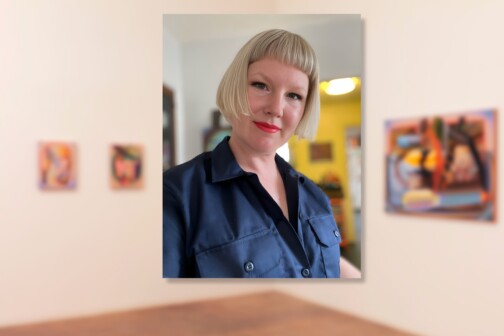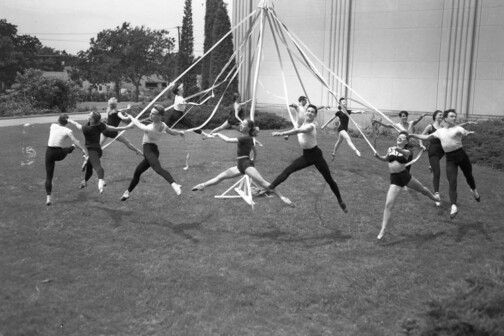Shea Brummett was a sophomore at Creekview High School in Carrollton when she started dating a boy—a seemingly innocent first step to one of the most common adolescent issues of our time.
The boy emotionally and sexually abused her. As is often the case with abusers, he isolated her from her friends. Soon she had an eating disorder, joining the 15 percent of adolescent girls nationwide with similar problems, according to a 2008 study by the U.S. Centers for Disease Control and Prevention.
“The way that most girls deal with an abusive relationship is an eating disorder, whether the batterer tells her she’s fat or just because she wants to have control over her own body,” Brummett says. “It was a way to gain control over myself because he took most of it from me by putting me down.”
Brummett lost 15 pounds, which most people attributed to her new spot on the high school drill team. She ate as little as possible, took diet pills and laxatives, vomited what she ate, and exercised for hours each day.
“I would’ve done anything …” she says. “I knew it wasn’t good for my brain for me not to eat. It wasn’t good for my dancing and performing, but that didn’t matter.”
Brummett’s mother, Melody, says her daughter didn’t look quite right. She knew something was wrong, but Shea—a busy teenager she didn’t see as often as she once had—was good at hiding her problems.
“Before, she was very engaging, very outgoing, people focused, outward,” Melody says. “After the eating disorder, she was much more quiet. She wasn’t really moody, but certainly things bothered her more. I just assumed it was high school pressure. She was extremely protective of this boy she was dating. She was very, very defensive about everything I would question or ask about.”
Like many young girls, Brummett decided on her own that she needed help. It was her idea to start seeing a professional. First it was a social worker—later a dietitian, a counselor, and then Dr. Susan Sugerman, co-founder of Girls to Women Health and Wellness in Collin County.
For Sugerman and Dr. Dana Rubin-Remer—Sugerman’s co-founder at Girls to Women—Brummett is one of many girls they had in mind when dreaming up the unique clinic. Girls to Women is the culmination of the founders’ decade-long fantasy, the details of which were worked out during infrequent walks through their neighborhood—children in strollers, medical careers in flux. Sugerman was a pediatrician and former staff physician at Southern Methodist University. Rubin-Remer, a pediatrician who specialized in adolescent care, also worked with students at SMU and evaluated cases of child abuse in Dallas.
Holistic Approach
In 2005, the two doctors opened the clinic they had imagined—one where every need of girls and young women could be met. Sugerman and Rubin-Remer handle medical care, while 12 specialists are available for nutritional care, counseling, massage, fitness, and communication skills. Sugerman and Rubin-Remer also refer patients to a community of local specialists.
“We take a resilience-based approach,” Sugerman says. “We believe that what kids want for themselves is what parents want for them—to grow up to be young women who understand themselves and love and value themselves and who have the skills to take care of and protect themselves. It’s about how you handle stress, because life isn’t about what’s easy. It’s about how you handle what’s hard and how the people around you help you handle those different things that are the measure of your life.”
The clinic sees female patients between the ages of 10 and 25. About half the patients that come through Girls to Women don’t have any serious issues. They may just have grown too old for their pediatrician or want a more holistic, female-based approach to health. Of those with specific problems, Sugerman estimates that 50 percent to 70 percent have issues with diet or body image, while 25 percent to 30 percent have issues with anger, depression, or anxiety.
“Somebody may come in with, say, headaches or stomachaches or problems with school attendance,” she says. “Through a fairly exhaustive process, we may find out the child may have a learning difference, may be in an abusive situation, may have eating/food issues.”
For example, Sugerman recently saw a young woman who had barely grown or gained any weight since her previous visit.
“She was not growing the way she should be growing. I found out her family struggles with obesity, and she’d always been thin,” Sugerman says. “Her response to changes in her body was to really cut down on her food intake. She’d transitioned into an eating disorder.”
This is where the holistic approach comes in. Sugerman recommended the patient see registered dietician Pam Chin-Lai for medical nutritional therapy. In other situations, she may refer patients to one of the clinic’s other specialists for tutoring, family violence or grief counseling, biofeedback, or bullying issues.
Private clinics with this multidisciplinary approach to care for girls and young women aren’t common. Some teen-focused practices are scattered throughout the country, but none are as comprehensive and community-based. Sugerman and Rubin-Remer get requests from all over the country from medical professionals who would like to start clinics based on this model.
Shea Brummett wishes there were more clinics like Girls to Women. She dropped out of drill team just before her senior year in high school. She began a support group for people in abusive relationships, and when she later went to Texas Tech University, she started a similar program there. But her experiences with abusive relationships didn’t completely end until her sophomore year in college. Now a senior at the University of North Texas, Brummett also works as a personal trainer.
“I see girls all the time hating their bodies and wanted to do something about it,” Brummett says. “I have a lot of 14- and 15-year-old girls that I train just to be able to say, ‘This is your weight and that’s OK. Here’s what we’re going to do about it.’ I am fine with my body. I think maturity has helped with that and just knowing what your values are and being secure.”
Shedding Harmful Habits
Grace Burson can relate to Brummett’s struggles. She started modeling five years ago when she was a sophomore at Williams High School in Plano. Two years into it, her agent told her she needed to lose a little weight and get in shape. Which she did.
“I became obsessed with it. I wanted to be as thin as the girls I saw in the magazines,” Burson says. “I started starving myself, putting food down the garbage disposal when my mom wasn’t looking. I’m 5-feet-8 and was probably about 120 pounds then. At my lowest point, I weighed about 95. At lunch I’d go to the library and read fashion magazines instead of eating.”
Her mom started to worry. She would send her daughter to school with a healthy lunch, which Grace would throw away. She was working out a couple of hours a day. During the holidays, when she was around family and was forced to eat, she began purging the meals from her body. The people at her modeling agency told her she looked good and never asked how she was losing the weight.
At 16, she started going to Girls to Women and seeing Sugerman and a dietitian, who encouraged her to eat healthy foods, adding a bit more to her plate each day. Her mother stayed with her for an hour after she ate to ensure that Grace wouldn’t vomit. A few months later, she told the modeling agency she was done.
Grace graduated from high school this year and, when she looks toward the future, sees herself helping young women the way Sugerman helped her.
“They told me that I was really pretty, [but] that modeling was probably not the best choice for me,” Grace says. “They told me that right now, I was too skinny, and a year from now—if I kept on doing this—I could’ve had a really bad heart condition or maybe die. That was when it really clicked.”
The Real Issue
From the fuzzy purple chairs to the intake form, it’s obvious much delving into the mind of adolescent girls was done before the doors of Girls to Women opened. One question on the form—there are a total of three, depending on the age of the patient—seems quite simple: “If you could change one thing about your life, what would it be?”
“It’s amazing in one question that you can hone down exactly to their real issue,” Sugerman says. “We hear, ‘I wish I were thinner,’ ‘I wish my dad would move back home,’ ‘I wish my sister wasn’t so sick all the time.’ ”
One young girl answered the question by drawing a picture of a pig with people saying, “You’re a fat pig.” Boys at school had taunted her. It’s pretty easy to see where that issue began; with some girls, however, it’s not so obvious.
“Our perspective is that problem behaviors—anything from self-harm to eating disorders to acting out, drug use, promiscuity—are symptoms of stress and poor coping abilities,” Sugerman says. “They are not the problems in and of themselves. Until you find out why the behavior is happening, stopping the behavior will only lead them to transition to different behaviors.”
Advice to parents of teenagers who may be in trouble centers on one theme: listening.
From Shea Brummett: “Believe them. Girls are going to say something. … If it’s a health issue of not enough food or a risk issue in terms of physical abuse, get aggressive and step in. Don’t be afraid to set those boundaries. And get a specialist that knows what questions to ask.”
From her mother: “I knew that if I pushed her it was going to backfire. So I had to kind of guide without pushing. I did a whole lot of listening and ‘What would you do …’ and ‘If I were in this position …’ Never, ‘You need to do this.’ The hardest thing to do is be willing to just listen and not intervene unless it gets to the point where you have to. Make it safe for them to feel like they can talk to you and you will just listen.”
From Diane Boddy, a licensed professional counselor at Girls to Women: “To listen is huge. Be curious and listen. Don’t push, listen. Being heard is a basic human need.”
Dialogue and healing like this are exactly what Sugerman and Rubin-Remer pictured on those walks years ago.
“We knew with some education and some coaching and some love and support that young women in this country can feel better about their bodies, their lives, certainly their sexuality,” Sugerman says. “There is no reason for them to never feel good enough.”
TEENS IN HARM’S WAY
11.3% of high school girls have been forced to have sex.
18.7% of high school girls have seriously considered attempting suicide.
9.3% of high school girls have attempted suicide.
20% of high school girls had an alcoholic beverage for the first time before age 13.
45.9% of high school girls have had sex; 4 percent before the age of 13.
35.6% of high school girls are currently sexually active; 45.1 percent did not use a condom the last time they had sex.
51% of 9-year-olds and 81 percent of 10-year-olds are experienced dieters, according to a study by the University of California.
16.3% of high school girls have fasted for more than a day to lose weight; 6.4 percent have vomited or taken laxatives.
1 in 3 high school students will be involved in an abusive relationship, according to a 2000 report by the Bureau of Justice.




